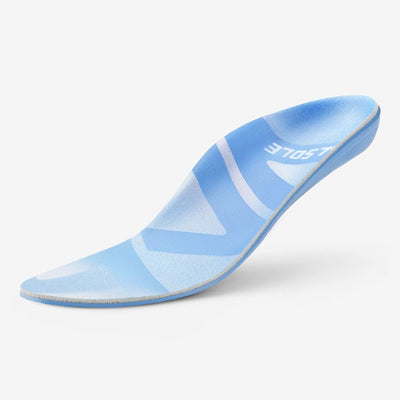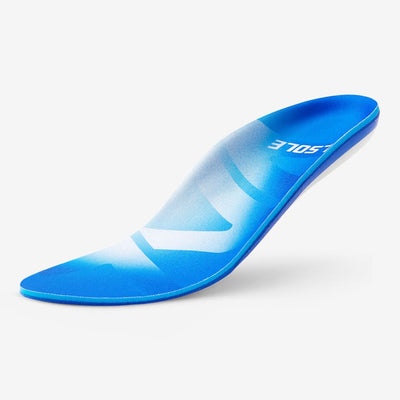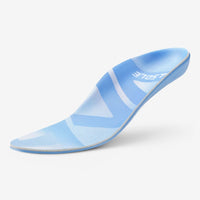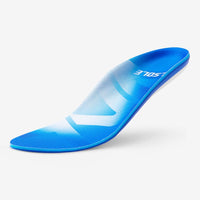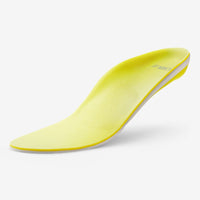Standing All Day? How the Right Insoles Can Prevent Long-Term Damage
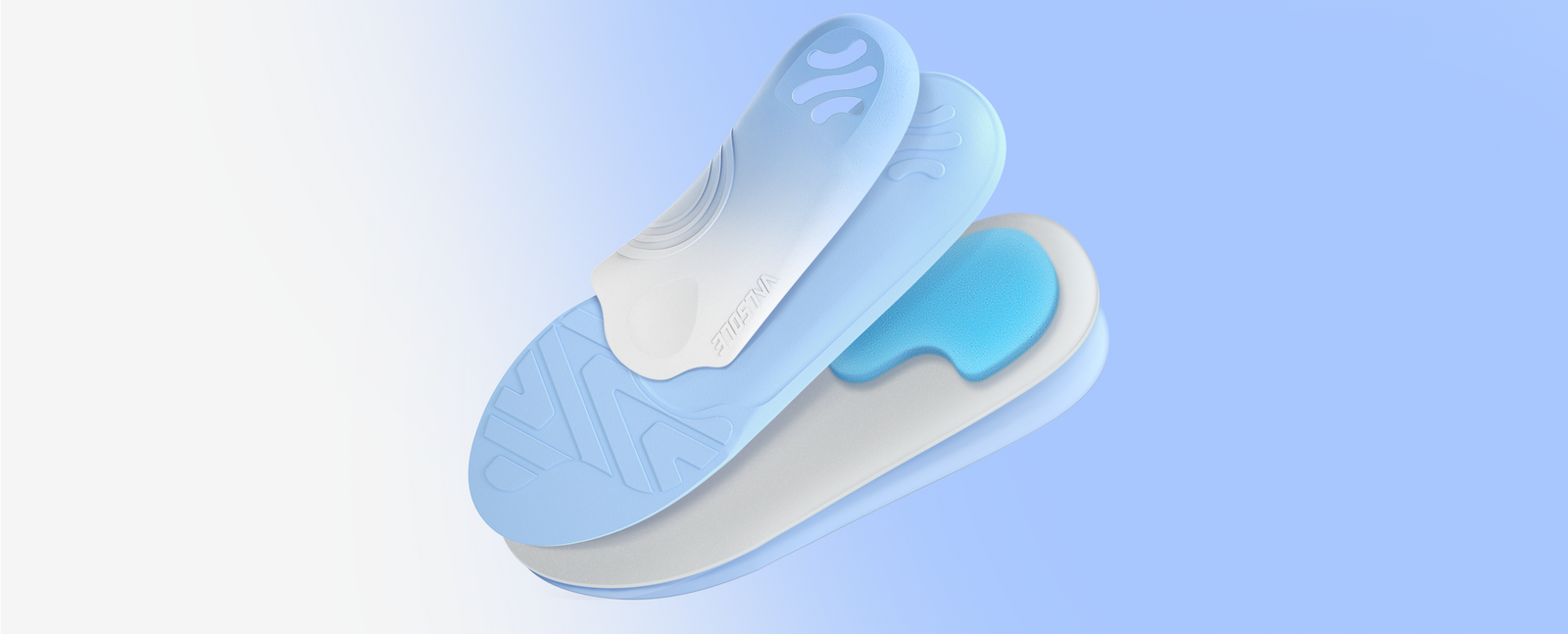
Workers who spend hours on their feet—nurses, retail employees, teachers—often experience chronic foot, knee, and lower back pain. This article examines how prolonged standing affects foot health and can lead to plantar fasciitis, bunions, and fatigue. It provides research-backed recommendations on choosing insoles to improve comfort, support, and endurance throughout the workday.
The Physical Toll of Prolonged Standing
If you spend the majority of your workday on your feet, you're not alone. Millions of professionals—nurses, retail workers, hospitality staff, teachers, warehouse employees—spend long hours standing or walking as part of their daily routines. While staying active during work may seem better than sitting at a desk all day, the reality is that prolonged standing without the right foot support can lead to a host of physical issues that add up over time.
Foot pain, knee strain, and lower back discomfort aren’t just passing annoyances—they’re warning signs. If left unaddressed, these issues can develop into chronic conditions that affect your quality of life, performance, and overall health. Many of these problems can be prevented or minimized with one simple solution: high-quality insoles.
Unlike walking or running, where movement allows the body to redistribute pressure and engage different muscles, standing for extended periods keeps the same muscle groups activated in a static position. This can lead to fatigue, stiffness, and poor circulation. Over time, the consequences go far beyond tired feet.
1. Plantar Fasciitis
Perhaps the most common foot condition among people who stand for a living, plantar fasciitis occurs when the ligament that supports the arch of the foot becomes inflamed. It’s characterized by sharp heel pain, especially noticeable with the first steps in the morning or after long periods of standing.
The repeated pressure and lack of cushioning can aggravate the plantar fascia, particularly if your shoes don’t offer proper arch support or shock absorption. Left untreated, plantar fasciitis can become a chronic condition that interferes with daily mobility.
2. Bunions, Hammertoes, and Other Deformities
Wearing improper footwear or standing on hard surfaces can contribute to structural issues in the foot. When your foot alignment is compromised, it alters your gait and weight distribution. This can lead to painful bunions, hammertoes, and calluses that often require long-term management—or even surgery.
3. Knee and Hip Misalignment
Our feet act as the foundation of the body. When that foundation is unstable—due to lack of support, overpronation, or uneven weight distribution—stress travels upward. The knees and hips compensate, leading to joint misalignment and strain. People often experience stiffness, swelling, or grinding in these joints after years of compensating for poor foot posture.
4. Lower Back Pain
Standing for long hours puts the spine under pressure, especially if your core muscles are fatigued and your footwear lacks support. Over time, poor posture while standing can lead to muscular imbalances and tightness in the lower back. For many workers, this becomes one of the most persistent and debilitating issues.
5. Circulatory Issues and Varicose Veins
Standing in place impairs blood flow from the legs back to the heart, especially without movement to activate circulation. This can lead to swelling (edema), fatigue, and in some cases, varicose veins. These issues aren’t just cosmetic—they can be painful and may increase the risk of more serious vascular conditions.
Why Footwear Alone Isn’t Enough
Most everyday shoes—even athletic ones—aren’t designed for 10 to 12 hours of continuous wear, especially on unforgiving surfaces like concrete or tile. Mass-produced shoes use generic sizing and basic insoles, which don’t account for individual differences in arch type, gait pattern, or pressure points.
Over time, your factory-installed insoles compress and lose effectiveness, providing less cushioning and zero targeted support. That’s where specialized insoles come in.
The Power of the Right Insoles
Insoles are inserts placed inside your shoes to provide additional support, cushioning, and alignment. Depending on your needs, insoles can range from general-purpose cushioned inserts to custom orthotics prescribed by a podiatrist. The key is finding the right insole for your foot type and daily demands.
Here’s what a well-designed insole can do:
Provide Arch Support
Proper arch support distributes pressure across the foot and prevents overpronation (when the foot rolls inward excessively) or supination (rolling outward). Both conditions can contribute to ankle instability, joint strain, and plantar fasciitis.
Insoles designed with adaptive arch support can improve foot posture and prevent unnecessary stress on ligaments and tendons (Smith, Jones, & Patel, 2018)
Enhance Shock Absorption
Every step you take sends shock waves up through your legs and spine. Good insoles are made with materials like gel, EVA foam, or memory foam that absorb and disperse this impact, reducing strain on your joints and muscles.
For workers on hard surfaces, this extra layer of cushioning can mean the difference between aching legs and a pain-free day.
Stabilize the Heel
Seligman and Dawson (2003) demonstrated that heel cups and contoured designs help anchor the heel in a neutral position, improving balance and alignment. This reduces the risk of strain on the Achilles tendon, supports the natural motion of your gait, and helps prevent injuries like plantar fasciitis and shin splints.
Prevent Fatigue
Fatigue isn’t just about being tired—it’s a signal that your body is compensating for poor mechanics. Supportive insoles help reduce muscular strain by keeping your foot in proper alignment and minimizing overuse of stabilizing muscles.
Improve Breathability and Hygiene
Modern insoles often feature moisture-wicking fabric and antimicrobial properties to keep feet dry and fresh. This not only improves comfort but also helps prevent blisters, fungal infections, and unpleasant odors that can come from being in shoes all day.
Backed by Science
Several studies have explored the impact of insoles on individuals who stand or walk for prolonged periods. Smith, Jones, and Patel (2018) found that nurses who wore custom insoles reported significantly less foot and lower limb pain than those who wore standard shoes alone.
The researchers who conducted this study also evaluated workers in industrial settings and concluded that insoles with enhanced cushioning and arch support significantly reduced lower extremity discomfort and muscular fatigue.
Through these results, it is evident that proper foot support isn’t just about comfort, but rather a vital part of injury prevention and occupational wellness.
Choosing the Right Insoles for Your Needs
With so many options on the market, how do you choose the right insole for you? Here are a few guidelines to help you narrow it down:
Know Your Foot Type
Are you flat-footed, high-arched, or somewhere in between? Many brands offer insoles tailored to specific arch types, so understanding your foot structure is the first step. You can do a simple wet test at home (step on a piece of paper with wet feet) to see your arch pattern.
Match the Insole to Your Job
If you're constantly moving, you’ll need different support than someone who stands in place for hours. For high-mobility jobs, look for responsive insoles with energy return. For stationary jobs, go for cushioning and arch support that reduce standing pressure.
Replace Regularly
Insoles wear out over time—typically every 6 to 12 months, depending on usage. Signs that it’s time to replace include flattening, loss of bounce, or returning pain and fatigue.
Building a Healthy Foot Routine
While insoles are a powerful tool, they work best as part of a holistic foot-care approach. Here are a few other tips to protect your feet and joints if you’re on them all day:
-
Stretch regularly: Stretch your calves, arches, and hamstrings before and after work to improve flexibility and circulation.
-
Alternate shoes: Switching between supportive shoes can reduce repetitive strain on the same pressure points.
-
Use anti-fatigue mats: If you work in a fixed position, these mats can reduce the impact of standing on hard surfaces.
-
Take microbreaks: Whenever possible, sit for a minute or shift your weight from one leg to the other to relieve pressure.
-
Hydrate and eat well: Proper nutrition supports muscle recovery and circulation—especially important if you’re physically active all day.
If you’re standing all day, discomfort isn’t a badge of honor. It’s a signal. Ignoring foot and joint pain can lead to long-term complications that affect your job performance, sleep, and overall quality of life. The right insoles offer an easy, effective way to support your body and improve your day-to-day comfort. Think of them as wellness gear, just as important as a supportive desk chair, ergonomic keyboard, or good mattress.
References
1. Smith, A. B., Jones, C. D., & Patel, E. F. (2018). The effect of cushioning materials on perceived musculoskeletal discomfort while standing at work. Applied Ergonomics, 68, 45–52. https://doi.org/10.1016/j.apergo.2018.01.020
2. Seligman, D. A., & Dawson, D. R. (2003). Customized heel pads and soft orthotics to treat heel pain and plantar fasciitis. Archives of Physical Medicine and Rehabilitation, 84(10), 1564–1567. https://doi.org/10.1016/S0003-9993(03)00363-0

